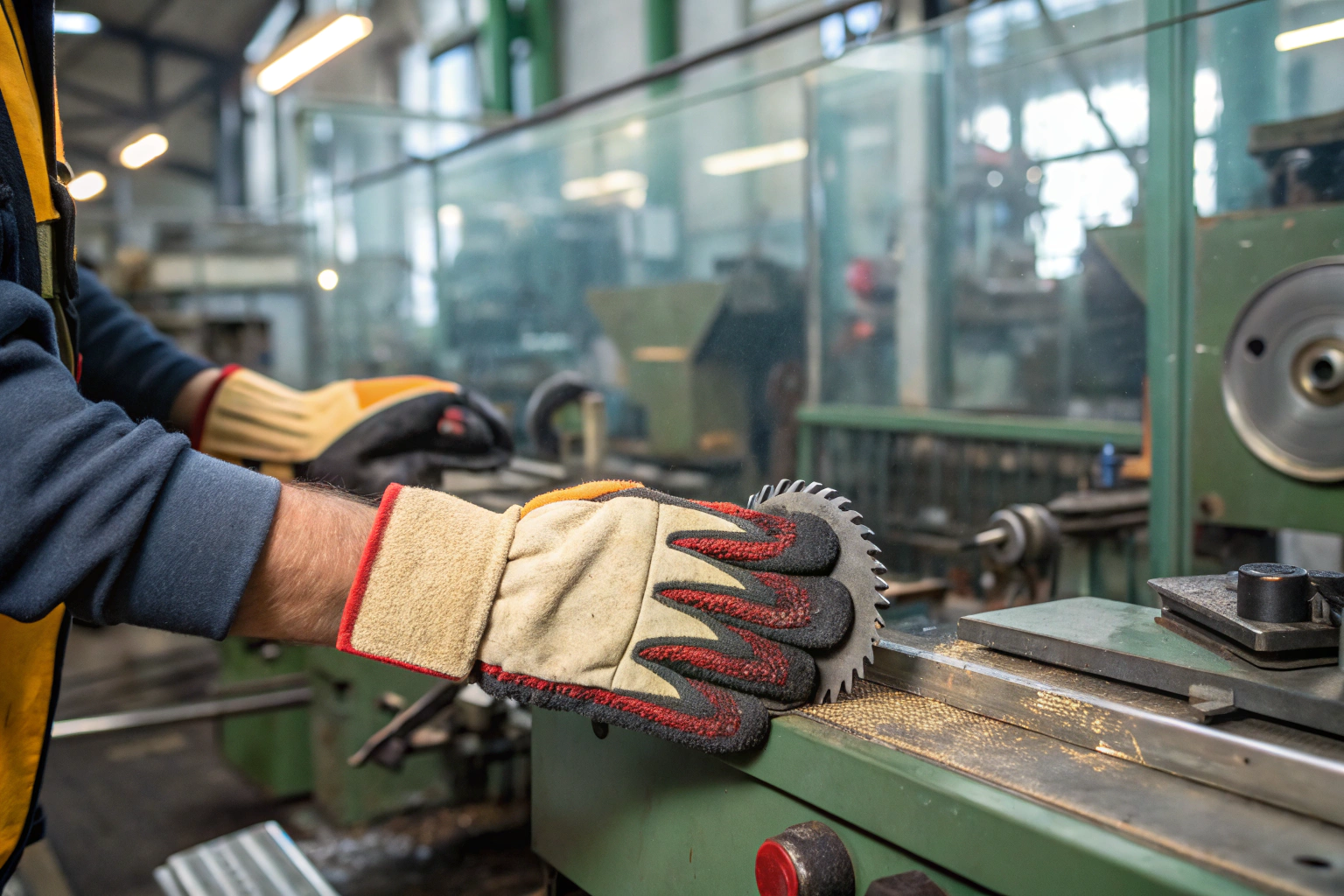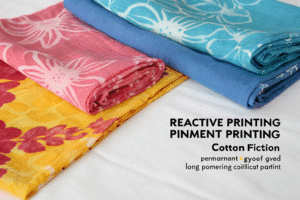In industries where sharp tools, metal parts, or broken glass are daily hazards, one injury to a worker’s hand could cost thousands in medical bills and lost productivity. Many safety managers and industrial buyers know gloves are required—but not all gloves are equal. That’s where the fabric choice makes a life-saving difference.
Cut-resistant fabrics like HPPE, Kevlar®, and composite blends are engineered to prevent lacerations and punctures during high-risk tasks. These technical textiles balance safety, comfort, and dexterity—making them ideal for industrial work gloves used in automotive, glass handling, construction, and metalworking sectors.
But what are the best options? How do you compare cut protection levels? As a textile manufacturer from Keqiao, China, I’ve helped global PPE brands design glove fabrics with EN388 and ANSI A9 cut ratings. This guide will give you clarity on the top-performing fabrics for industrial glove safety.
Which Fabrics Offer the Highest Cut Resistance Ratings?
In industrial glove design, cut resistance is measured by how well a fabric can withstand slashing or abrasion under force. The two most recognized standards are:
- EN 388 (Europe): Cut levels from 1–5 or A–F using the ISO 13997 TDM test
- ANSI/ISEA 105 (USA): Cut levels from A1 to A9
The best-performing cut-resistant fabrics are engineered with high tensile strength, tightly woven structures, and abrasion-resistant properties.
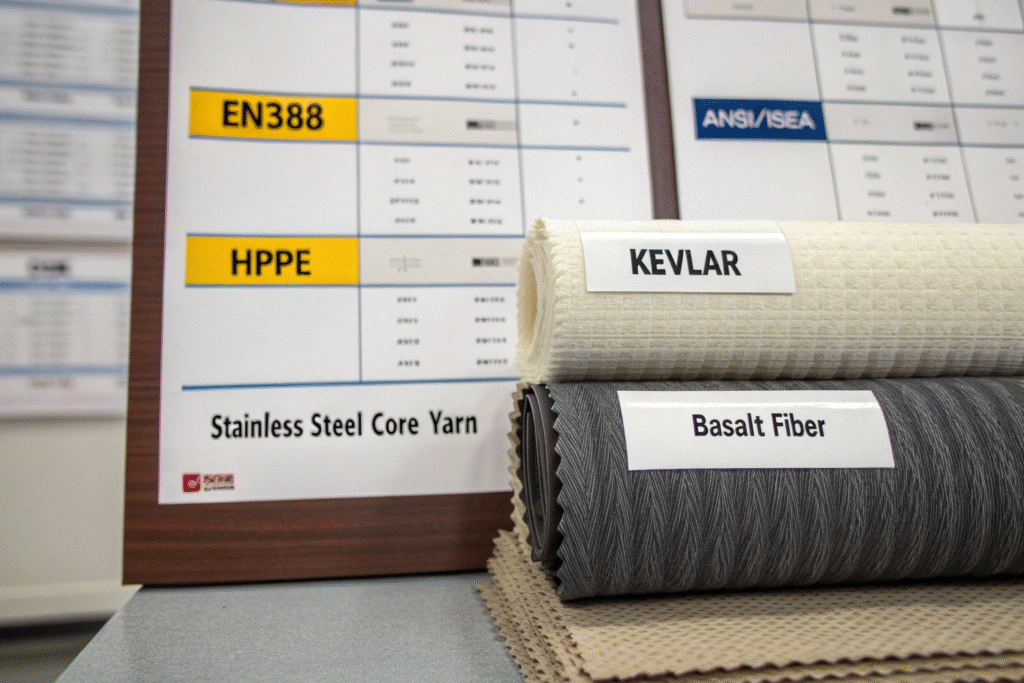
What Are the Top Materials Based on Performance?
| Fabric Type | Cut Resistance | Comfort | Heat Resistance | Use Case |
|---|---|---|---|---|
| HPPE (High Performance Polyethylene) | A5–A7 | High | Low | General assembly, glass handling |
| Kevlar® (Aramid) | A4–A6 | Medium | Excellent | Metal stamping, high heat zones |
| Stainless Steel Blended Yarn | A6–A9 | Low | Medium | Sheet metal, food slicing |
| Basalt Fiber | A5–A7 | Medium | Very High | Heavy-duty cutting, welding zones |
HPPE is often preferred due to its lightweight feel and affordability. On the other hand, Kevlar is ideal for thermal risk environments due to its flame resistance.
What About Coated Fabrics?
Fabrics alone aren't enough. Cut-resistant fabrics are often coated with polyurethane (PU), nitrile, or latex for better grip and abrasion. Our lab in Keqiao offers seamless coating options that preserve fiber integrity while meeting EN388 abrasion level 4.
How Can You Evaluate the Durability of These Fabrics?
Knowing a fabric’s cut level isn’t enough—you need proof it will hold up over thousands of work hours. That’s where fabric durability testing comes into play.
Durability for industrial gloves depends on more than just the fiber—it includes weave density, coating adhesion, and moisture resistance.
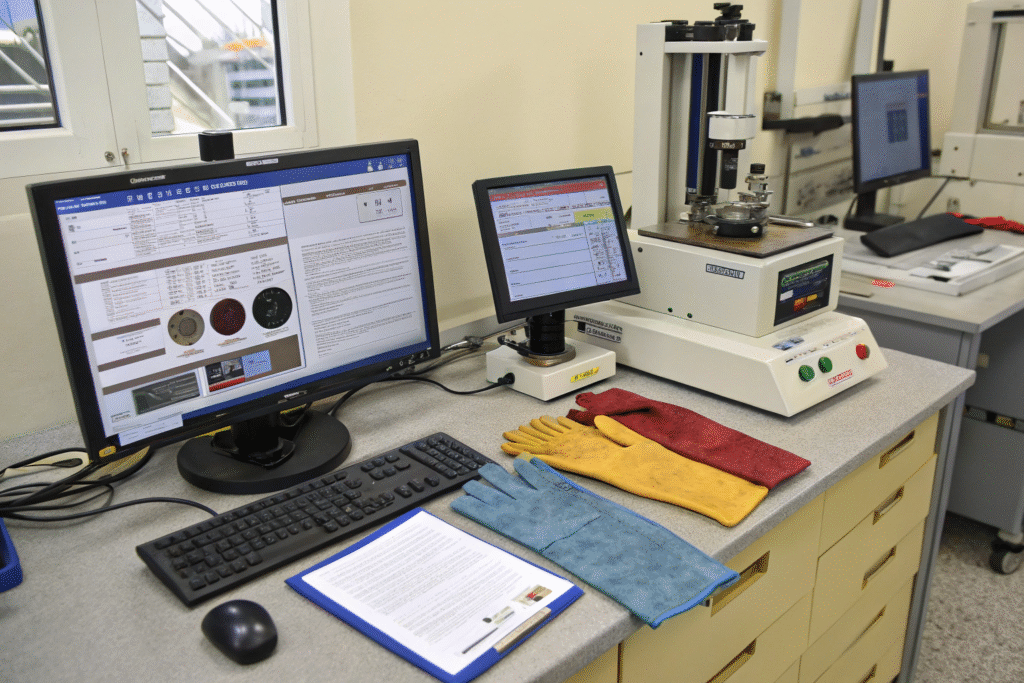
What Tests Should You Look for?
Reliable glove fabrics should come with these certifications or lab results:
- ISO 13997 (TDM Cut Test) – Measures resistance under constant load with sharp blade
- EN388:2016 Ratings – Includes cut, abrasion, tear, and puncture performance
- ANSI/ISEA 105-2016 Cut Scores – Evaluated on grams of force to cut through
Our fabric batches are tested in-house and by third parties like SGS and Intertek to validate cut strength and repeated-use durability.
How Do Coatings Affect Longevity?
Nitrile and PU coatings can degrade under oil or water exposure. We recommend a hybrid coating method—PU for breathability, nitrile for oil resistance. Our Keqiao finishing plant uses controlled blade tensioning to ensure the coating doesn't weaken the core yarn.
What Blends Improve Dexterity Without Sacrificing Safety?
Workers need to move their fingers, grasp parts, and sometimes operate screens—all while staying protected. So how do we keep gloves flexible?
Blending fibers allows us to combine high cut resistance with stretch, tactile sensitivity, and comfort.
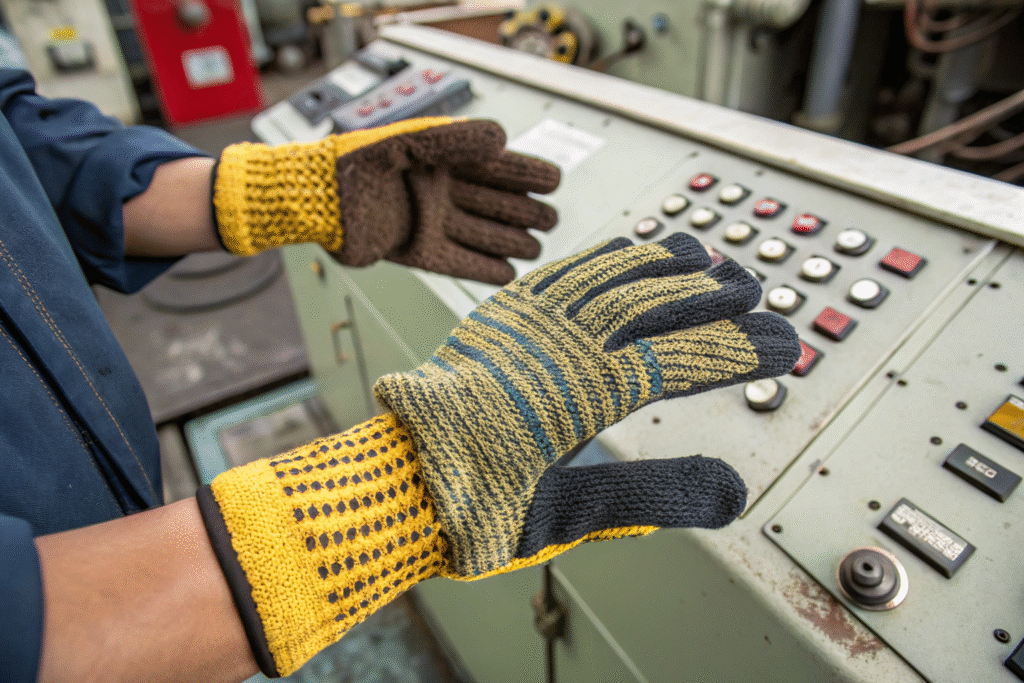
Which Fiber Blends Work Best for Comfort?
| Blend | Key Advantage |
|---|---|
| HPPE + Spandex | High dexterity, snug fit |
| Kevlar + Nylon | Durable, heat-stable, soft touch |
| HPPE + Glass Fiber | Ultra-high cut, slight stiffness |
| Basalt + Polyester | Flame + cut protection in harsh conditions |
We’ve developed knitted glove shells that layer HPPE with glass fiber cores and spandex face yarns. These are ANSI A6-rated yet soft enough for all-day wear.
Why Choose Seamless Knit Structures?
Unlike cut-and-sew fabrics, seamless knits reduce seam rupture and enhance flexibility. Our machines produce 13 to 18 gauge knits optimized for both grip and airflow. The tighter the gauge, the better the cut protection—but it’s a trade-off with flexibility.
What Should You Ask a Supplier Before Buying?
Sourcing cut-resistant glove fabric is different from buying ordinary cloth. You need technical transparency, customization, and regulatory compliance.
Ask smart sourcing questions to avoid greenwashing or substandard batches.
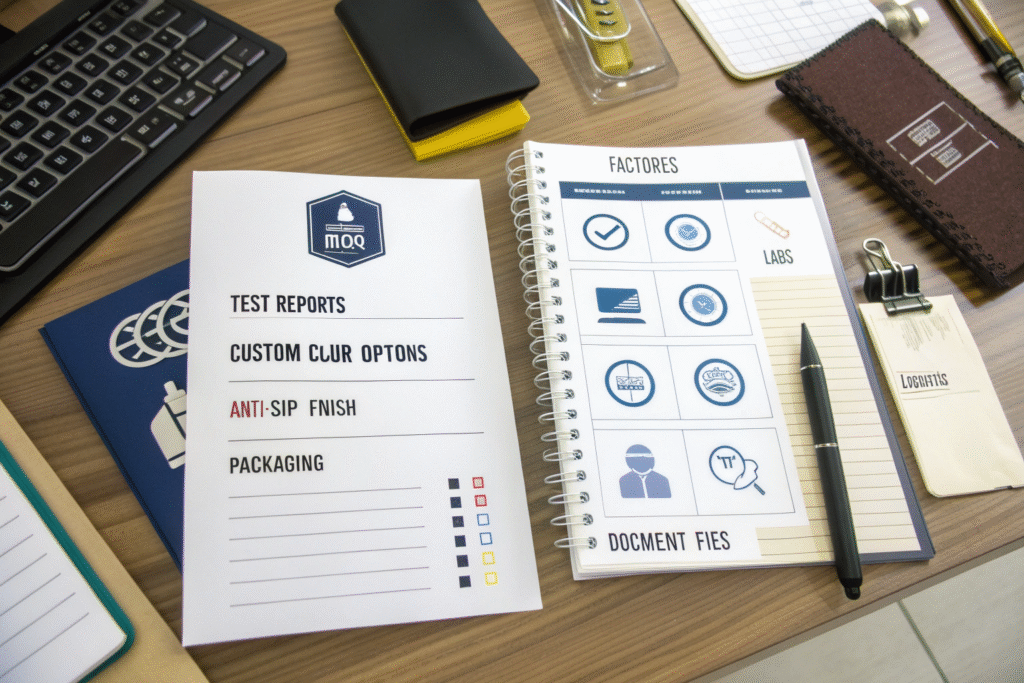
What Key Questions Reveal the Right Supplier?
- Can you provide ISO and ANSI cut resistance reports?
- Do you produce your own fiber blends or outsource them?
- What are your minimum order quantities and lead times?
- Can you apply custom coatings or anti-slip finishes?
- Is your factory audited for worker safety and QC?
We offer low MOQs starting at 500 meters per color and full OEM/ODM support with private labeling. Every fabric roll comes with QR-based batch verification.
What About Shipping and Compliance?
We ship globally via DDP (Delivered Duty Paid) terms, ensuring buyers in the US or EU won’t face unexpected tariff issues. Our fabrics comply with REACH, RoHS, and California Prop 65 standards. You can verify compliance on OEKO-TEX’s portal.
Conclusion
Cut-resistant fabrics are essential for protecting workers in high-risk environments, but choosing the right material requires technical understanding. From HPPE and Kevlar to custom blended knits, your choice affects both protection and productivity.
At Fumao Fabric, we specialize in producing and exporting cut-resistant industrial glove fabrics with full lab validation and OEM finishing. Whether you’re a glove manufacturer, importer, or safety distributor, we help you reduce sourcing risk and improve glove performance.
To develop your next glove fabric order or request swatches, please contact our Business Director Elaine at elaine@fumaoclothing.com. We’ll guide you from fiber to glove, ensuring every stitch meets safety standards.

